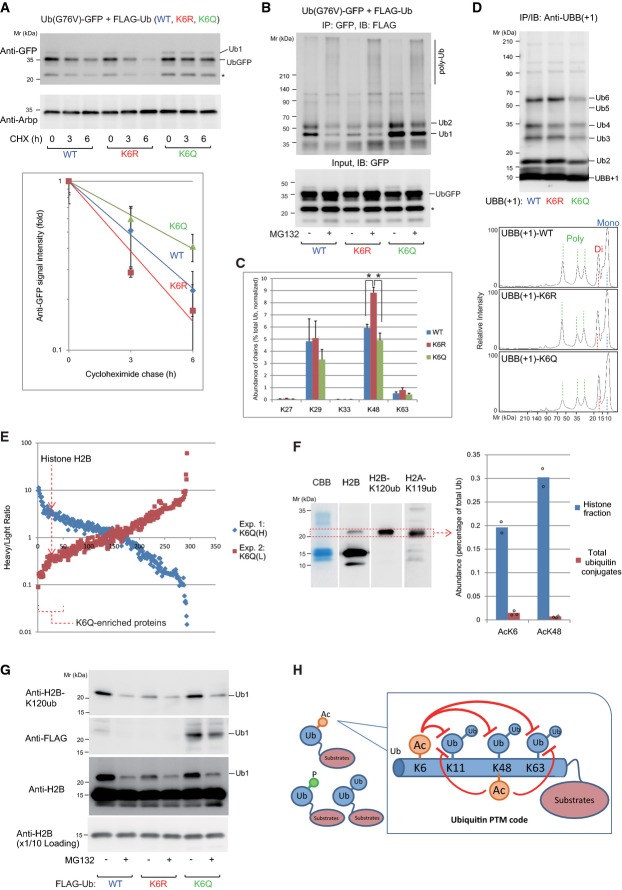Figure 5.
- Turnover of UbG76V-GFP was delayed by incorporation of the acetylation-mimic K6Q ubiquitin. 293F cells were transfected with UbG76V-GFP together with either wild-type, K6R-, or K6Q-containing FLAG-ubiquitin as indicated, and a cycloheximide chase analysis was performed. Data represent the mean ± SE of quantified UbG76V-GFP band intensities; n = 3. The asterisk indicates a processed form of UbG76V-GFP.
- Incorporation of the acetylation-mimic ubiquitin leads to the accumulation of monoubiquitylated UbG76V-GFP. 293F cells were cotransfected with UbG76V-GFP and the mutant ubiquitins as indicated. Then, the cells were treated with MG132 for 6 h, followed by immunoprecipitation with an anti-GFP antibody. The ubiquitylation of UbG76V-GFP was analyzed using an anti-FLAG antibody. The asterisk indicates a processed form of UbG76V-GFP.
- PRM analysis of UbG76V-GFP prepared as in (B). Data represent mean ± SE; n = 3. *P < 0.05, Student's t-test.
- The acetylation-mimic UBB(+1) represses polyubiquitylation anchored onto UBB(+1). In the lower panel, the band densities were quantified and shown as normalized to the UBB(+1) bands.
- SILAC analysis. FLAG-Ub-K6R or FLAG-Ub-K6Q was expressed in 293F cells cultured in either heavy isotope- or light isotope-containing medium, and cell lysates were immunoprecipitated with an anti-FLAG antibody. The ratio of abundance of each Ub-K6Q/K6R-associated protein is shown from two independent experiments.
- Histones are substrates for acetyl-ubiquitylation. Gel regions corresponding to monoubiquityl-histones were analyzed by PRM. Mean and individual data points; n = 2 for histones, n = 3 for FK2.
- MCF7 cells were transfected with the indicated ubiquitin mutants, and acid-extracted histones were analyzed.
- A proposed model. Acetylation of ubiquitin at K6 and K48 represses polyubiquitylation at K11/K48/K63, constituting the ubiquitin PTM code.
Source data are available online for this figure.

